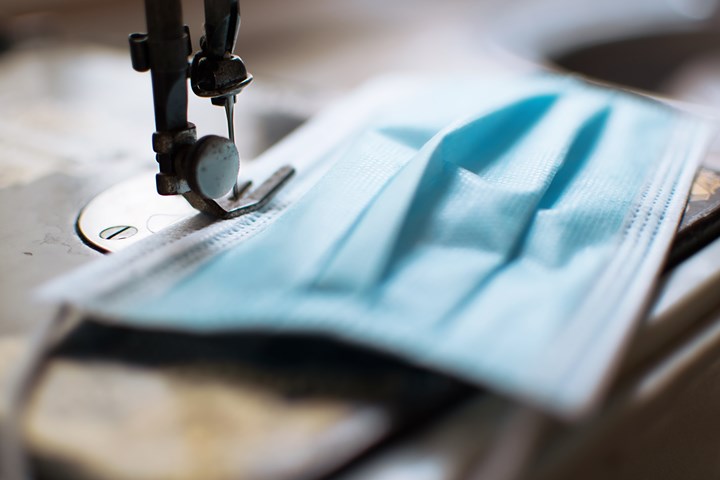Lessons learned, a year later
When the pandemic struck, we yearned for normality. Getting back there will take time and patience.

It’s been about a year since the coronavirus became a pandemic, and with vaccines in distribution, many of us are now trying to imagine what life might be like in a world where the virus is, if not eradicated, at least under control and manageable.
I know that many of us would like to think that we can simply revert to all of our pre-pandemic behaviors, both socially and professionally — traveling for work or for pleasure, gathering at will with friends and family, attending sporting events, attending trade shows and conferences, visiting customers and/or suppliers.
Reverting to this pre-pandemic behavior, however, assumes that the environment in which we live our lives has remained unchanged. In fact, it is rather difficult to think about an aspect of our lives that has not been touched and changed by the pandemic. Therefore, moving forward in this post-pandemic world — successfully — will require some recalibration of ourselves and the composites industry as a whole, recognizing what has changed and how that might affect our options and actions.
This begs the question: What has changed in the composites industry that should be recognized and accounted for? Or, perhaps more importantly, what have we learned in the last 12 months?
The first and most obvious thing we have learned is just how valuable commercial air travel is, and how much we took it for granted. The implications of severely limited air travel are many, but for the composites industry, there are two big ones. The first, of course, is the large and negative impact on aircraft production. Aerospace is the most valuable end market served by the composites industry, thus the reduction of build rates by Boeing and Airbus that have trickled down throughout the supply chain, putting substantial economic pressure on fabricators, moldmakers and raw material suppliers. The second implication is the restriction on in-person interaction among composites industry professionals, whether at trade shows, conferences, plant visits, etc. Composites manufacturing, as you know, is highly tactile and demands a certain level of physical interaction to understand how resins and fibers are combined to make a finished part. Virtual interactions, videos and photos can be helpful, but at some point that in-person connection becomes essential to advance ideas and technologies.
What has changed in the composites industry that should be recognized and accounted for?
The second thing we have learned is that in an asymmetrical economic downturn, such as that wrought by the pandemic, there are winners as well as losers. As I noted in my January editorial, the social interaction limits imposed by the pandemic have driven consumers to outdoor activities, made apparent by the substantial increase in demand for boats, recreational vehicles and sporting goods within the last 12 months. And the global wind energy industry enjoyed one of its strongest years ever in 2020, even with a pandemic-induced slowdown last spring.
The third thing we have learned — are learning — is that the global supply chain that delivers raw materials to manufacturers has some vulnerabilities that we are still struggling to come to terms with. For example, as the recreational marine and recreational vehicle markets surged in 2020, the supply of glass fiber gun rovings tightened. The result is long lead times for rovings deliveries, and higher prices. The causes of this tight supply are numerous. First, the vast majority of the world’s glass fiber rovings comes out of China, and as the Chinese economy recovered in late 2020, demand within China for rovings increased. On top of that, Chinese rovings suppliers, which until recently had been paying — in an effort to maintain market share — the 25% tariff on product exported to the U.S., decided to stop paying the tariff and implemented a 20% price hike on their U.S. customers. Overlaying all of this is a global supply imbalance of shipping containers. The pandemic has limited the supply of manual labor at major sea ports, thus many containers are spending more time than usual either on a ship awaiting unloading, or on the dock awaiting processing. This has, in turn, slowed the circulation of shipping containers between and among trading countries.
The bottom line is that even if the global economy was brought to a hard and sudden stop by the pandemic, emergence from it has been and will continue to be uneven, with incremental and sporadic return to some of the norms we knew before. Ultimately, however, I believe strongly that we will be interacting in-person again, wherever that may be. And I hope to see you there.
Related Content
What’s new for 2024?
ÂÌñÏ×ÆÞ discusses recent changes, upcoming events and strategies for the upcoming year.
Read MoreThere's a lot up in the air
Trade tensions and supply chain shifts — what the U.S.-China dispute means for aerospace and composites suppliers.
Read MoreRevisiting the OceanGate Titan disaster
A year has passed since the tragic loss of the Titan submersible that claimed the lives of five people. What lessons have been learned from the disaster?
Read MoreMaking an effort to move industry forward
A reflection on the insights, connections and collaboration afforded by attending composite industry events like SPE ACCE and CAMX.
Read MoreRead Next
Scaling up, optimizing the flax fiber composite camper
Greenlander’s Sherpa RV cab, which is largely constructed from flax fiber/bio-epoxy sandwich panels, nears commercial production readiness and next-generation scale-up.
Read MoreNext-gen fan blades: Hybrid twin RTM, printed sensors, laser shock disassembly
MORPHO project demonstrates blade with 20% faster RTM cure cycle, uses AI-based monitoring for improved maintenance/life cycle management and proves laser shock disassembly for recycling.
Read MoreCutting 100 pounds, certification time for the X-59 nose cone
Swift Engineering used HyperX software to remove 100 pounds from 38-foot graphite/epoxy cored nose cone for X-59 supersonic aircraft.
Read More












